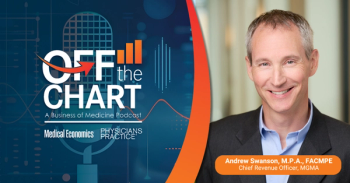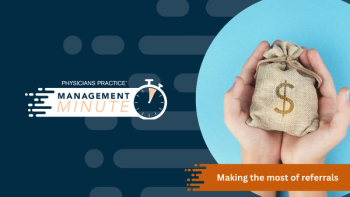
ICD10: Payers, Unspecified Codes, and Preparing Providers
AHIMA's Kathy DeVault explains how to work with payers on the ICD-10 transition, including use of unspecified codes, and how to best prepare providers.
One of your key allies in the transition from ICD-9 to ICD-10 will be the payers you contract with at your medical practice.
The transition will require "patience," notes Kathy DeVault, senior director of professional practice for the American Health Information Management Association (AHIMA). And while the use of unspecified codes is prevalent in ICD-9, your office may see more denials after the switch to ICD-10 in October 2014.
In this video, DeVault explains how to adjust your expectations and also how best to start preparing the providers in your medical practice for the looming medical coding change.
For more on ICD-10 preparation, be sure to visit our
TRANSCRIPT:
On the back end, with payers, patience is going to be a key for all of us. But it is keeping that communication open with payers and finding out why a claim was denied, and having that conversation.
One of the things we are all going to struggle with - we struggle with it now in ICD-9 - is the unspecified codes. There are unspecified diagnosis codes in ICD-10-CM. There's been some misunderstanding about that. They are still there [in ICD-10]. But there is also a greater level of specificity in ICD-10 and we want to be able to use that as it is appropriate; if we have appropriate documentation to use that level of specificity. And payers, I believe, will start looking at those unspecified codes and maybe not paying on them; maybe denying more claims based on the specificity because we've got it, but we're used to using unspecified codes.
So that's a level of education that we need for our providers. A good example is asthma. In the asthma codes right now, we don't have a lot of specificity. We can identify with acute exacerbation or with status asthmaticus, but that's all. Now in ICD-10, we can go down to a much greater level of specificity in asthma - mild persistent, moderately persistent, severely persistent, etc. And for most providers that treat asthma - especially pediatricians, pulmonologists - that kind of specificity shouldn't be a surprise. It is what they are using now, but we want to make sure we are providing that education to say here's what's available. Maybe it is as simple as saying, "With asthma, here's the additional specificity that's available now."
In coding, injuries is another big, huge expansion in ICD-10-CM which makes a lot of people nervous, but some of that expansion is based on laterality - all 10 fingers, all 10 toes, right and left arms, etc. And then the specificity goes more to [the] specific site. I just don't have a broken wrist, I have specific bones involved in that process and so if you are an orthopedic practice, a family practice, treating those injuries and fractures, again it is a great opportunity to start looking through those commonly used diagnoses in your practice and see what's changed in ICD-10.
A really easy way to do that is to look at the top 10 diagnoses per provider in your practice. So look at those top diagnoses, what you are coding them to now, and what you have the potential to code them to in ICD-10. That helps to narrow down the physician education. What do I tell them when I have a [coding] book that's this big, right? When I have a code set that's this big?
But in most practices, you don't use the whole book. You use what's specific to that provider or specific to your practice. So, it's an easy way provide some very focused education for your providers.
Newsletter
Optimize your practice with the Physicians Practice newsletter, offering management pearls, leadership tips, and business strategies tailored for practice administrators and physicians of any specialty.














